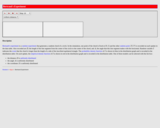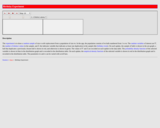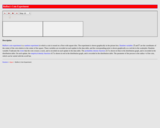
Line Graphs Algebra Readiness Remediation Plan
- Subject:
- Mathematics
- Material Type:
- Lesson Plan
- Provider:
- VDOE
- Author:
- VDOE
- Date Added:
- 10/07/2024

Line Graphs Algebra Readiness Remediation Plan

Data Representation and Interpretation; Focus on Stem and Leaf Plots - Algebra Readiness Remediation Plan

Data representation and interpretation - Algebra Readiness Remediation Plan

Choosing a graphical method that best displays a set of data - Algebra Readiness Remediation Plan

Data Representation and Interpretation - Algebra Readiness Remediation Plan

Apply Properties of Normal Distributions to Determine Probabilities Associated with Areas Under the Standard Normal Curve - Mathematics Instructional Plan

Formative Assessment - Solve problems involving inverse variation, joint variation, and a combination of direct and inverse variations - Just in Time Quick Check, Teacher Notes, and Supporting Resources

Exploring Variations - Mathematics Instructional Plan

Calculating mean absolute deviation, variance, and standard deviation - Mathematics Instructional Plan

Formative Assessment - Identify and describe properties of a normal distribution - Just in Time Quick Check, Teacher Notes, and Supporting Resources

Analyzing and using the standard normal curve - Mathematics Instructional Plan

Formative Assessment - Interpret and compare z-scores for normally distributed data - Just in Time Quick Check, Teacher Notes, and Supporting Resources

Formative Assessment - Apply properties of normal distributions to determine probabilities associated with areas under the standard normal curve - Just in Time Quick Check, Teacher Notes, and Supporting Resources

Formative Assessment - Compute and distinguish between permutations and combinations - Just in Time Quick Check, Teacher Notes, and Supporting Resources

Counting using permutation and combinations - Mathematics Instructional Plan

Formative Assessment - Collect and analyze data, determine the equation of the curve of best fit in order to make predictions and solve practical problems, using mathematical models of quadratic and exponential functions - Just in Time Quick Check, Teacher Notes, and Supporting Resources

This resource consists of a Java applet and expository text. The applet is a simulation of the ballot experiment: The votes in an election are randomly counted. The event of interest is that the winning candidate is always ahead in the vote count.

This resource consists of a Java applet and expository text. The applet is a simulation of Bertrand's experiment: a random chord on a circle The event of interest is whether the length of the chord is larger than the length of the inscribed equilateral triangle. Three models for generating the random chord can be used.

This resource consists of a Java applet and expository text. The applet is a simulation of the birthday experiment: a sample of size n is chose at random and with replacement from the first m positive integers. The random variable of interest is the number of distinct sample values. The event of interest is that all sample values are distinct.

This resource consists of a Java applet and expository text. The applet simulates Buffon's coin experiment. The radius of the coin can be varied. The applet illustrates a random experiment, the sample space, random variables, events, probability, and relative frequency.